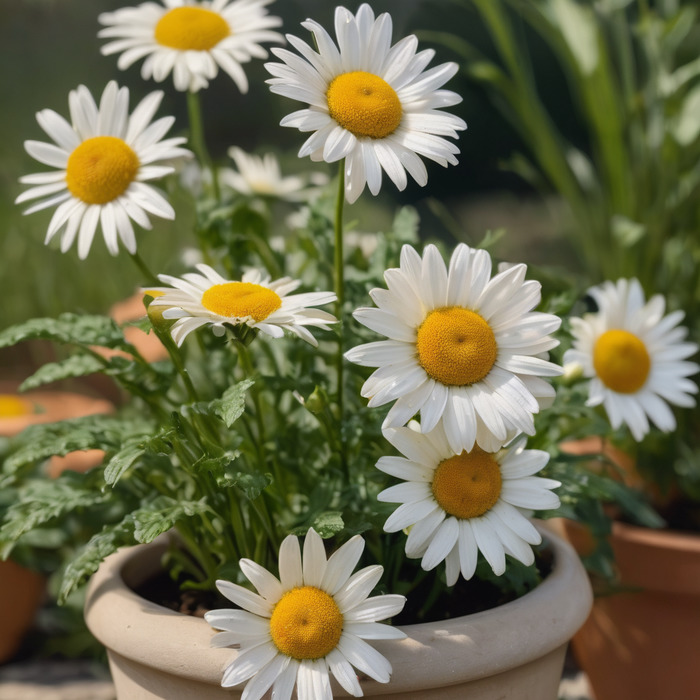The Perennial derivative, Becky Shasta Daisy is a simple plant to repot. Follow the steps below on repotting your Perennial. The steps are very similar to any other plant in the Asteraceae family.

Table of Contents
Managing the growth and care of Becky Shasta Daisy following repotting
Repotting is most of the time going to help your Becky Shasta Daisy grow, especially if you are moving it to a more suitably sized pot with some better fitting soil. However, once repotted, you should grow the plant in the right hardiness zone of 5–9 (USDA) and in a similar climate to where the plant would have usually been growing (North America). This is vital to maximise the chance it will reach its mature size of 3–4 feet tall, 2–3 feet wide. Also, a final factor in ensuring that Becky Shasta Daisy reaches this height and the full mature size that it can is to ensure the exposure from the sun is correct. Aim for it to get Full exposure.
Should you keep your repotted Becky Shasta Daisy inside or outside?
Whether Becky Shasta Daisy is kept inside or out after repotting is dependent on personal preference and you may wish to rotate your Becky Shasta Daisy from one environment to the next as the seasons change. So, compare your local climate to your plants natural climate: North America. Also, make sure you’re nearby the recommended hardiness zone if keeping outside: 5–9 (USDA)
If your Becky Shasta Daisy is repotted, will it bloom?
A mature Becky Shasta Daisy may get to 3–4 feet tall, 2–3 feet wide but only if you take care of it. Better yet, it may even bloom. If you get a burst of White blooms during the Summer period then you’ll know you’ve done the right job with repotting.
Repotting Becky Shasta Daisy from one pot to another step by step
In this article and the steps below, you’ll learn how to repot your Becky Shasta Daisy. Follow along as you do it or make notes if necessary.
First, get your Becky Shasta Daisy loose in the pot
Once you have decided on repotting, do you research. Without research, the repotting process may not be as effective as you think and you can use this as an opportunity to maximise the health and growth of your Becky Shasta Daisy by checking the soil ph (Neutral) and timing the repot just before the bloom time of the plant too. The bloom time of Becky Shasta Daisy is: Summer. Once you are sure when to repot, water your soil in preparation for extraction.
Second, prepare the new pot for your Becky Shasta Daisy
Patience is key when extracting your Becky Shasta Daisy from the pot. Depending on the age of the Becky Shasta Daisy, it may have complex root systems. Take care and maybe turn it upside down to ease it out.
Third, select the soil optimally when preparing Becky Shasta Daisy for repotting
So you have prepared your new pot and also removed Becky Shasta Daisy from the old pot. The final step is simple, fill in any gaps with Well-drained soil and allow your Becky Shasta Daisy to flourish.
What other names does Becky Shasta Daisy have?
Your Becky Shasta Daisy may have other names you could call it. Consider the botanical and scientific names for the plants below. You may need this information when considering what soil type to buy or to get more specific on how to take care of it.
| Botanical name | Leucanthemum x superbum ‘Becky’ |
|---|---|
| Scientific name | Becky Shasta Daisy Leucanthemum x superbum ‘becky’ |
More information about Becky Shasta Daisy after repotting
To take care of your Becky Shasta Daisy in the best way after repotting, make sure you research how to take care of Perennial in general as your plant is from the same family. In latin, this family name is called Asteraceae.
